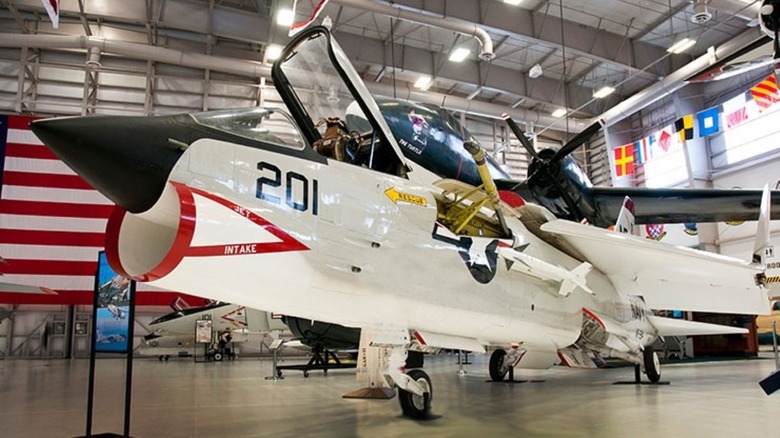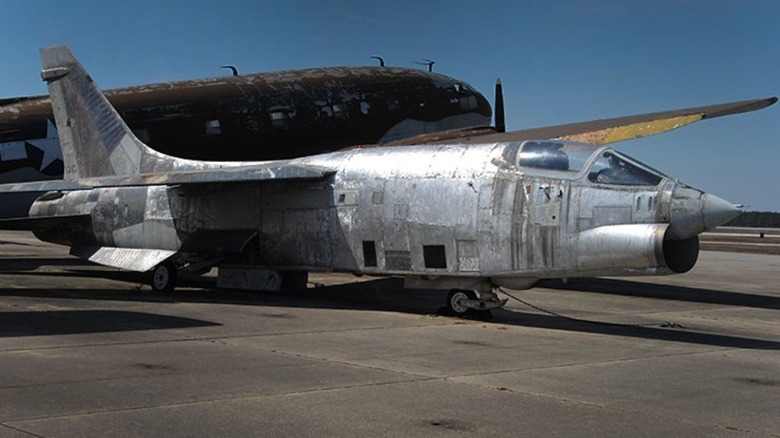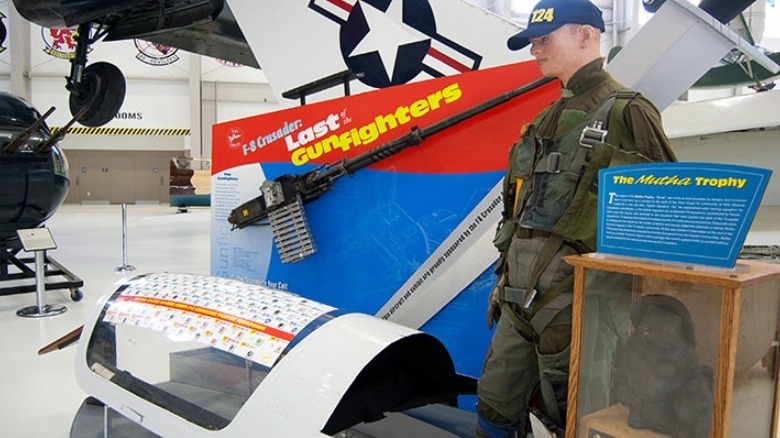The Last Of The Gunfighters: The Crusader Fighter Jet And Its Role In The Vietnam War
The first several decades of aerial combat were fought with conventional firearms. World War I planes like the Sopwith Camel used dual Vickers .303 caliber machine guns not unlike the machine guns used by crews of soldiers on the ground. In the second World War, combat stars like the P-51 Mustang used six .50 caliber machine guns to down enemy planes. Before rockets and air-to-air missile technology took off, aircraft relied on machine guns to knock out enemy planes and get the job done.
The Vought F-8 Crusader was such a plane, and was the very last offensive fighter jet to use machine guns as its primary armament when it was delivered to the U.S. Navy in the 1950s. Its first ever role in combat was to act as a photo reconnaissance plane during the Cuban Missile Crisis in 1962. It was the first production jet to exceed 1,000 miles per hour, so it handled its picture-taking role quite well. Its full speed was an astonishing 1,133 miles per hour when flying at 35,000 feet. Major John Glenn Jr., the same man who would later be one of America's first astronauts, flew one from California to New York in a record 3 hours and 22 minutes on July 16th, 1957.
Old guns are still effective
Despite its armaments being a little outdated, the four 20mm cannons were no peashooters. In the skies over Vietnam, the F-8 was frighteningly effective and, according to the U.S. Navy, took down 18 enemy aircraft. Those air-to-air kills were not just any plane or helicopter that happened to be zipping around. The F-8 was destroying Soviet-produced MiG fighters. To keep up, Naval aviators slapped some Sidewinder missiles onto the jet for good measure.
The antiquated weapons system gave the impression that the Crusader was not extremely advanced at the time of its production, despite its usefulness. Engineers built it with titanium for the airframe, allowing to plane to be as light as possible. Its Pratt & Whitney turbojet with afterburner capability was a technological marvel with its hefty 18,000 pounds of thrust.
Over its lifespan, the F-8 Crusader was a carrier favorite and served a number of roles over its three decades long service history. A specific F-8 in the possession of the Smithsonian had 7,475 flight hours on the clock was used by the Navy for 28 years. After the Vietnam War and subsequent conflicts throughout Southeast Asia, the F-8 returned to a reconnaissance role before it was retired in 1987.


